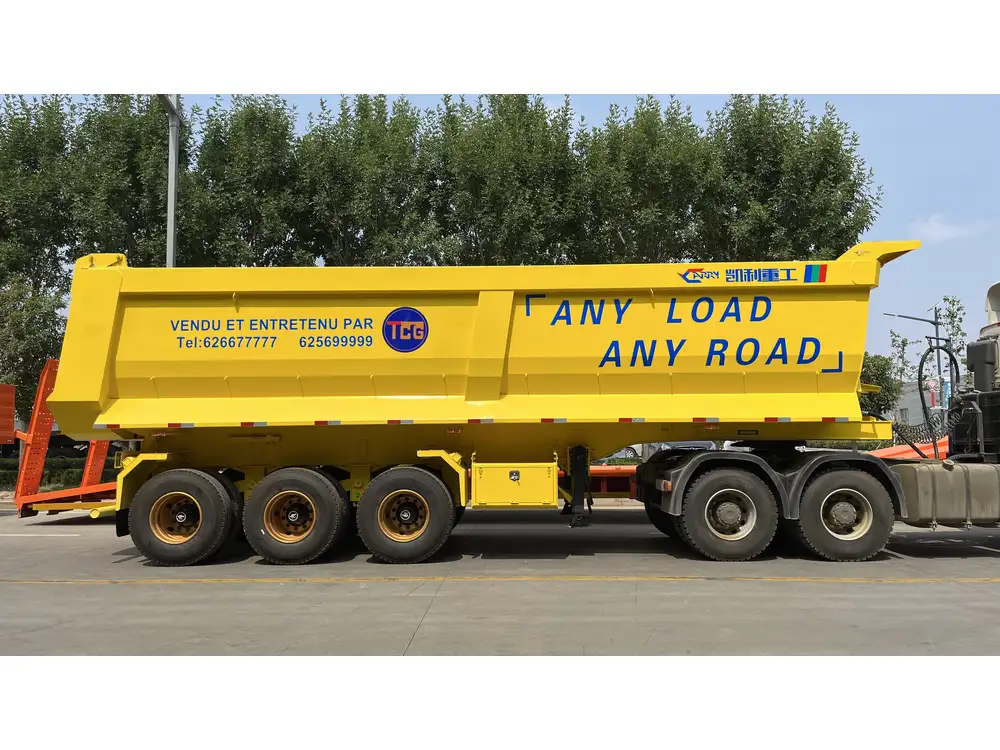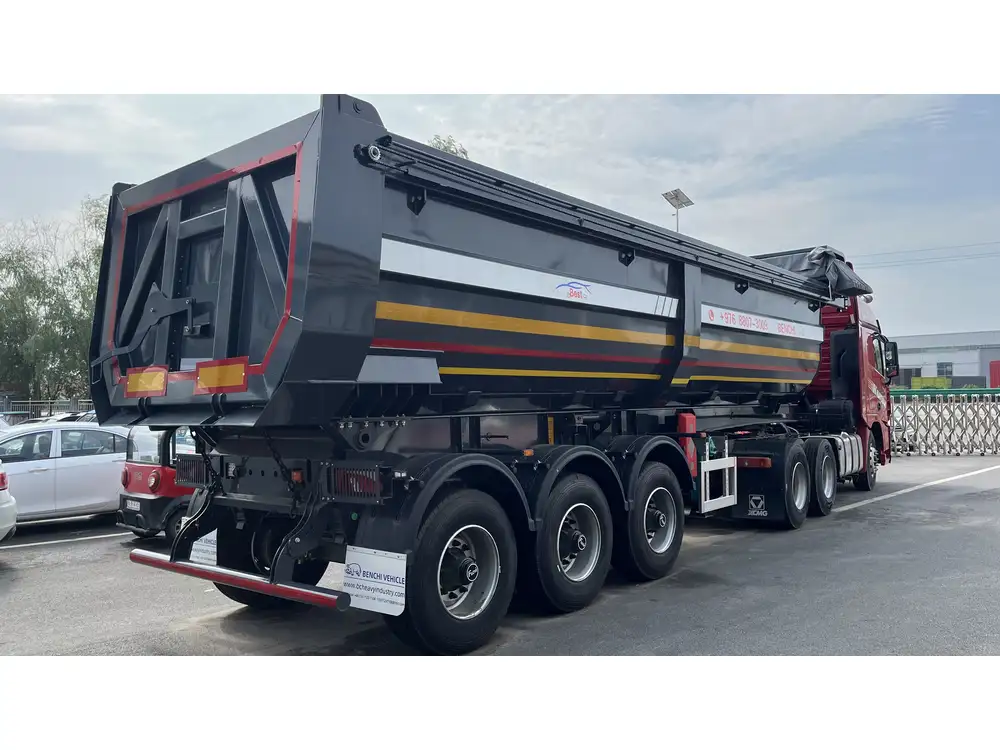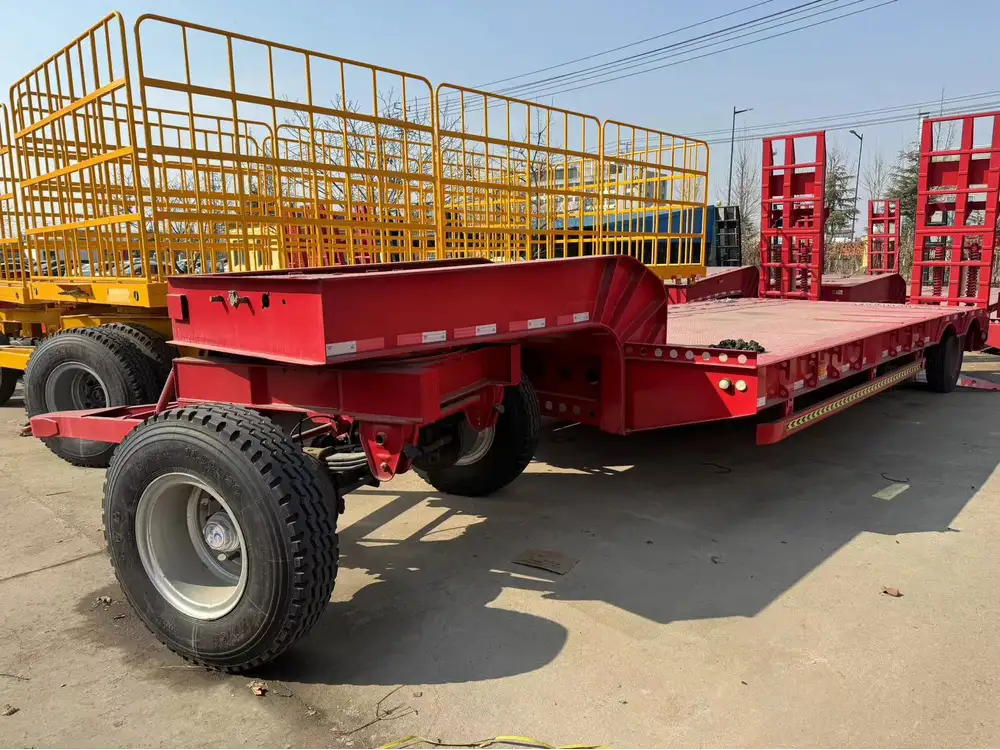Unhitching a semi-trailer is a crucial skill for operators in the trucking industry. This task, while seemingly straightforward, requires a clear understanding of equipment components, safety protocols, and the specific steps to execute the unhitching process efficiently. In this in-depth guide, we delve into the nuances of unhitching a semi-trailer, offering detailed instructions, essential tools, troubleshooting tips, and safety measures to ensure a smooth and secure detachment.
Table of Contents
- Understanding the Semi-Trailer Components
- Necessary Tools and Equipment
- Step-by-Step Guide to Unhitching
- Common Mistakes to Avoid
- Safety Protocols to Follow
- Troubleshooting Unhitching Issues
- Conclusion
Understanding the Semi-Trailer Components
Before embarking on the unhitching process, it is essential to familiarize oneself with the main components of a semi-trailer and tractor. The key areas to focus on include:
| Component | Description |
|---|---|
| Fifth Wheel | The pivot point where the tractor connects to the trailer. |
| Kingpin | A metal pin that secures the semi-trailer to the fifth wheel. |
| Release Handle | Handle used to release or latch the kingpin from the fifth wheel. |
| Landing Gear | Adjustable legs for raising and lowering the trailer. |

The Role of Each Component
- Fifth Wheel: The fifth wheel is an arched coupling device designed to latch onto the kingpin. Understanding how it operates is vital for unhitching and re-hitching.
- Kingpin: Located directly underneath the trailer, this component is crucial as it locks into the fifth wheel and provides the necessary support for towing.
- Release Handle: A pivotal mechanism that allows for the disconnection of the trailer from the tractor. Knowing how to operate it is fundamental for safe unhitching.
- Landing Gear: Used for stabilizing the trailer when it is unhitched, ensuring that it does not collapse or roll away during the process.
Necessary Tools and Equipment
Before initiating the unhitching process, gather the following tools and equipment to facilitate efficient operations:
- Wrench Set: For securing any bolts or components.
- Safety Gloves: To protect your hands from sharp edges.
- Wheel Chocks: To prevent unwanted movement of the trailer.
- Inspection Ladder: Useful for visual checks at height.
- Flashlight: For visibility during low-light conditions.
Tool Utilization
Utilizing these tools effectively will not only enhance the safety of the process but also contribute to a more streamlined workflow. For instance, using wheel chocks ensures that the trailer remains stationary while the unhitching process is underway.

Step-by-Step Guide to Unhitching
Unhitching a semi-trailer can be broken down into a series of straightforward steps. Follow this comprehensive guide to ensure a seamless experience:
Preparation and Positioning
- Ensure that the tractor and trailer are parked on a flat, stable surface.
- Engage the parking brake on the tractor to prevent any rolling.
Inspect the Surroundings
- Check for any hazards or obstacles that could impede the process.
- Place wheel chocks behind the trailer wheels.
Lower the Landing Gear
- Engage the landing gear crank and lower the legs until they firmly contact the ground.
- Ensure that the weight of the trailer is on the landing gear and not on the fifth wheel.
Disengage the Fifth Wheel Lock
- Locate the fifth wheel release handle.
- Pull or push the handle (depending on the model) to disengage the locking mechanism.
Disconnect the Kingpin
- Firmly check that the fifth wheel lock is completely disengaged.
- Slowly pull the tractor forward while observing that the kingpin separates from the fifth wheel.
- Listen for a click sound indicating successful disengagement.
Finalize the Unhitching Process
- Once clear, stop the tractor a safe distance from the trailer.
- Visually inspect the fifth wheel for any remaining connections and confirm its readiness for the next hitch.
Common Mistakes to Avoid
Recognizing common pitfalls can significantly improve efficiency and safety. Here are a few mistakes to watch out for:
| Mistake | Consequences |
|---|---|
| Failing to Engage the Brake | Could lead to movement, risking damage or injury. |
| Not Checking Surroundings | Increases the chance of accidents and mishaps. |
| Neglecting Landing Gear | May cause instability in the trailer post-unhitching. |
Importance of Awareness
Vigilance throughout the unhitching process is critical. Ensuring that all components are functioning correctly and that the work area is clear can prevent unforeseen incidents from occurring.

Safety Protocols to Follow
To maintain safety during the unhitching process, adhere to the following protocols:
Wear Personal Protective Equipment (PPE)
- Always don appropriate PPE including gloves, steel-toed boots, and reflective gear.
Communicate Clearly
- If working with a partner, establish clear signals and communication methods to avoid confusion.
Regular Inspections
- Conduct regular checks of both the tractor and trailer machinery to ensure functionality.
Know Emergency Procedures
- Familiarize yourself with emergency measures in case of accidents or mechanical failures.
Troubleshooting Unhitching Issues
While most unhitching processes go smoothly, challenges can arise. Here are some common issues and their fixes:
| Issue | Possible Causes | Solutions |
|---|---|---|
| Stuck Fifth Wheel | Dirt buildup, lack of maintenance | Clean the area, lubricate parts. |
| Kingpin Jamming | Misalignment or debris | Adjust trailer position to align. |
| Landing Gear Malfunction | Rust or mechanical failure | Inspect and replace if needed. |
Quick Troubleshooting Tips
- If the fifth wheel is stuck, check for accumulated dirt and debris, then attempt to clean it.
- Light adjustments to the trailer’s position can often resolve misalignment issues related to the kingpin.

Conclusion
Mastering the art of unhitching a semi-trailer involves a comprehensive understanding of the equipment, an inspection of your surroundings, and adherence to safety protocols. By converting the theoretical knowledge into practical application, individuals in the trucking industry can perform this critical task with confidence and efficiency.
In the fast-paced world of logistics and transportation, proficiency in semi-trailer operations not only enhances safety but also boosts overall productivity. Familiarizing oneself with the steps outlined in this guide will prepare you for success in the field, paving the way for superior operational excellence. Whether you are a seasoned operator or a newcomer, continual practice and diligence will ensure that every unhitching process is executed flawlessly.



